Arf.
I've had a busy few days and about 600 pictures to show for it, which I've spent the whole morning uploading and then sifting through, some of which I'll be posting here (you've been warned!). I went on an outing to St Andrews over on the east coast yesterday and had a great time, not least because I got to see lots of Pictish stuff. Which was kinda handy, because the day before I went to a conference on the Picts, so it was all very topical.
The conference was really interesting (I feel very intellectual now) and although there wasn't really much on pre-Christian Pictish religion there were some good tidbits to chew on. Of particular interest was the mention of the Rhynie Man stone, which shows a man carrying a special kind of axe that had a hammer on one end and which would have been used to stun cattle or oxen before they were killed or sacrificed. If you look closely at the picture you'll see the man has what appears to be a tonsure, and while it's impossible to say for sure, it does seem to gel with what we know of "druidic" tonsures (that wasn't really touched on at the conference, but I thought I'd mention it anyway). What was mentioned was that an iron pin (which wouldn't have been functional, given the fact that it was made of iron, and therefore suggesting it was purely votive) has been found, shaped like the axe hammer, and there are the same kind of axes found on stone monuments elsewhere.
Another paper looked at the issue of Pictish language and especially Kenneth Jackson's suggestion that they spoke a pre-Indo-European language and a Gallo-Brittonic language. While it's an idea that's often repeated (even today), Jackson himself wasn't exactly confident in his arguments and he later abandoned the theory in favour of accepting that Pictish was either a Brythonic dialect, or Brythonic-derived language, which academics like Whitley Stoke and W.J. Watson had long argued in favour of. It was argued that Jackson's ideas weren't really based on linguistic evidence, as Stokes, Watson and others had drawn their conclusions from, but were instead primarily influenced by archaeological theories of the time – that evidence of a new material culture is indicative of a new people (i.e. therefore the arrival of Celtic culture in Britain = a Celtic invasion), hence the suggestion of a pre-Indo-European language from the Bronze people as well as a Celtic one from continental invaders of the Halstatt and later La Tene periods.
One of the final papers of the day had some interesting stuff on the influence of Pictish art on insular art by way of a technique called interpenetration (pretty much any academic terminology ends up sounding rude, doesn't it?), especially in relation to the Book of Kells. I'll just link to a summary of the paper as it's been given elsewhere, because I got to see one of the examples referred to at St. Andrews Cathedral the next day. So that leads nicely onto PHOTOS.
The example in question is the St. Andrews Sarcophagus:
The information panel describes is as a "royal burial shrine" that dates to the late eighth century, so we're firmly in Pictish territory here. It's a pretty fine example of Pictish sculpture and I'll give you some close ups of it, although because of the lighting the quality isn't as good as I'd like – I've tried to tweak them for clarity as much as I can. So here's a close up of the panel you can see above, which has examples of the "interpenetration" mentioned at the conference:
Interpenetration is when one artistic motif flows seamlessly into another. On this panel, if you look closely you'll see that the sculptor has "fretwork" flowing into "interlace" and then back again. I think if you look at the bottom part of the equal-armed cross (i.e. to the left of the two crouching people in the bottom right-hand corner) you can see it most clearly. It's very rare to find examples of interpenetration in insular art outside of Pictland so the occurrence of it in the Book of Kells raises questions about who did the artwork, or perhaps where the artist may have drawn their inspiration. And so on.
The longer panel is pretty interesting in its own right as well, and this is because you can see details of people's clothing and hairstyles, along with animals like horses, deer, dogs, and more fantastical beasts. It depicts a "woodland hunting scene," probably of the person the shrine was made for – the best guess is that it was probably the shrine of Oengus, son of Fergus, a Pictish king who died in 761:
The information panel notes that the scene seems to have been heavily influenced by Mediterranean artistic styles, but there are also some Anglo-Saxon elements mixed in with the over all Pictish flavour. Here are some close-ups:
This guy is noticeably larger than anyone else in the scene, and it's probably a depiction of the Biblical King David wrestling a lion (he's kinda nonchalant about the whole thing, don't you think?). There's a ram to the left of his head and what appears to be a dog to his right, so he's protecting his flock from the lion. This is one of the major clues about Mediterranean influences here, what with lions not really being a thing in these parts, for one. His clothes are Byzantine in style and his sword is of a Germanic type that was contemporary to the time of the sculptor, but his shoes are Pictish.
Then we have what is likely to be the occupant of the shrine itself – the king who may or may not be Oengus, son of Fergus:
Like David, the king here is fighting a lion, so an obvious comparison is being drawn. David epitomises the ideal king and shows that good leadership can lead his people to salvation and the mercy of God. So Oengus is a pretty decent guy, too....
This guy beneath the king isn't discussed in the information panel, but it's noted that both he and Oengus are dressed in typical Pictish style and have typically Pictish weapons, too. In the close up of the king you can see the details of the horse's gear. There are no stirrups, though, they wouldn't have been in use yet.
I'll just put up a couple more pictures of the panels that sit either side of the hunting scene, right:
And left:
And I'll finish up now because this post is getting a little long and image heavy. The other side of the sarcophagus hasn't survived, but you can tell by the lack of weathering on the stone over all that it would have been kept indoors, probably in a Pictish church or perhaps a mausoleum. At some point, and for some reason – "not long after the initial period of display" it was then deliberately buried.
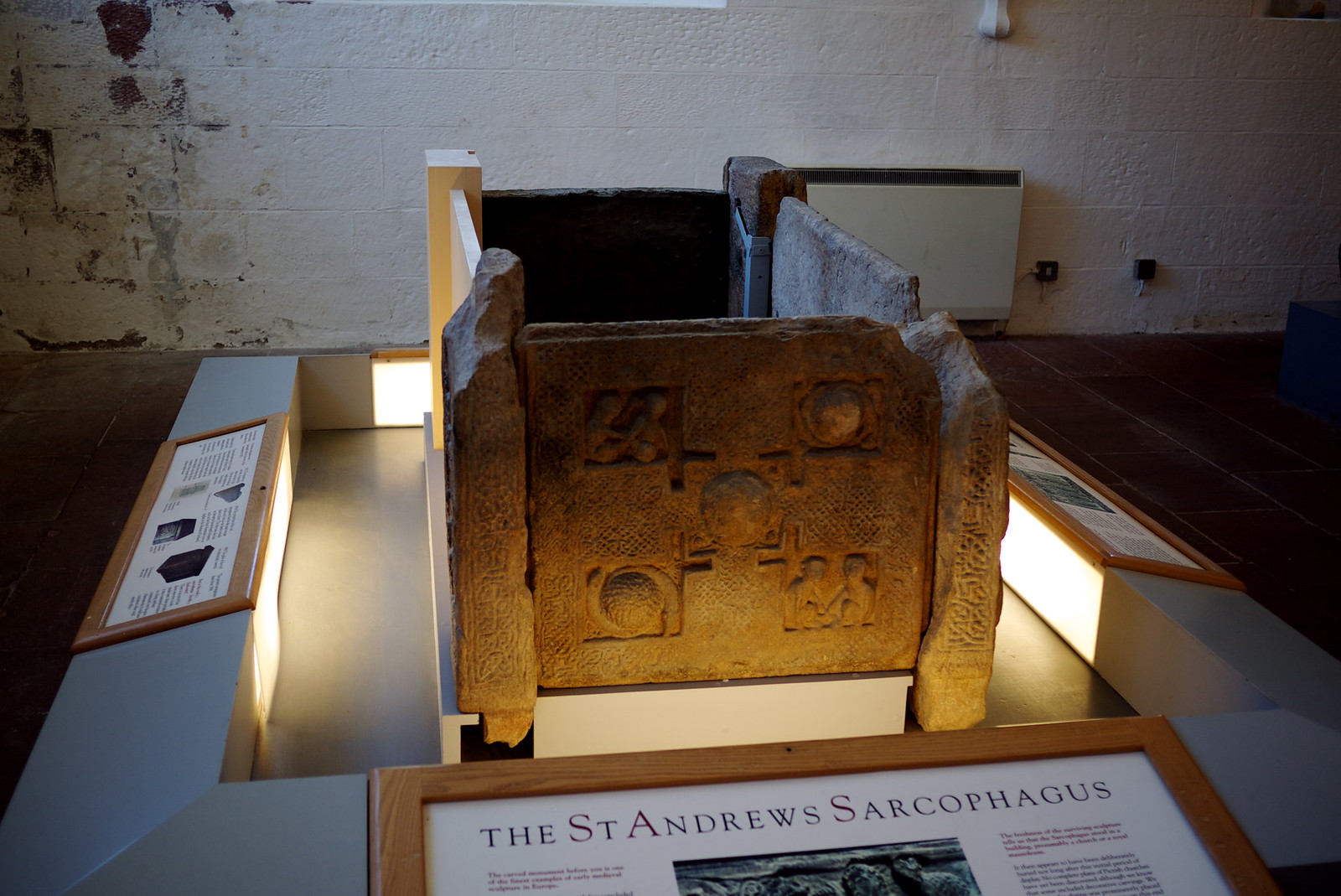

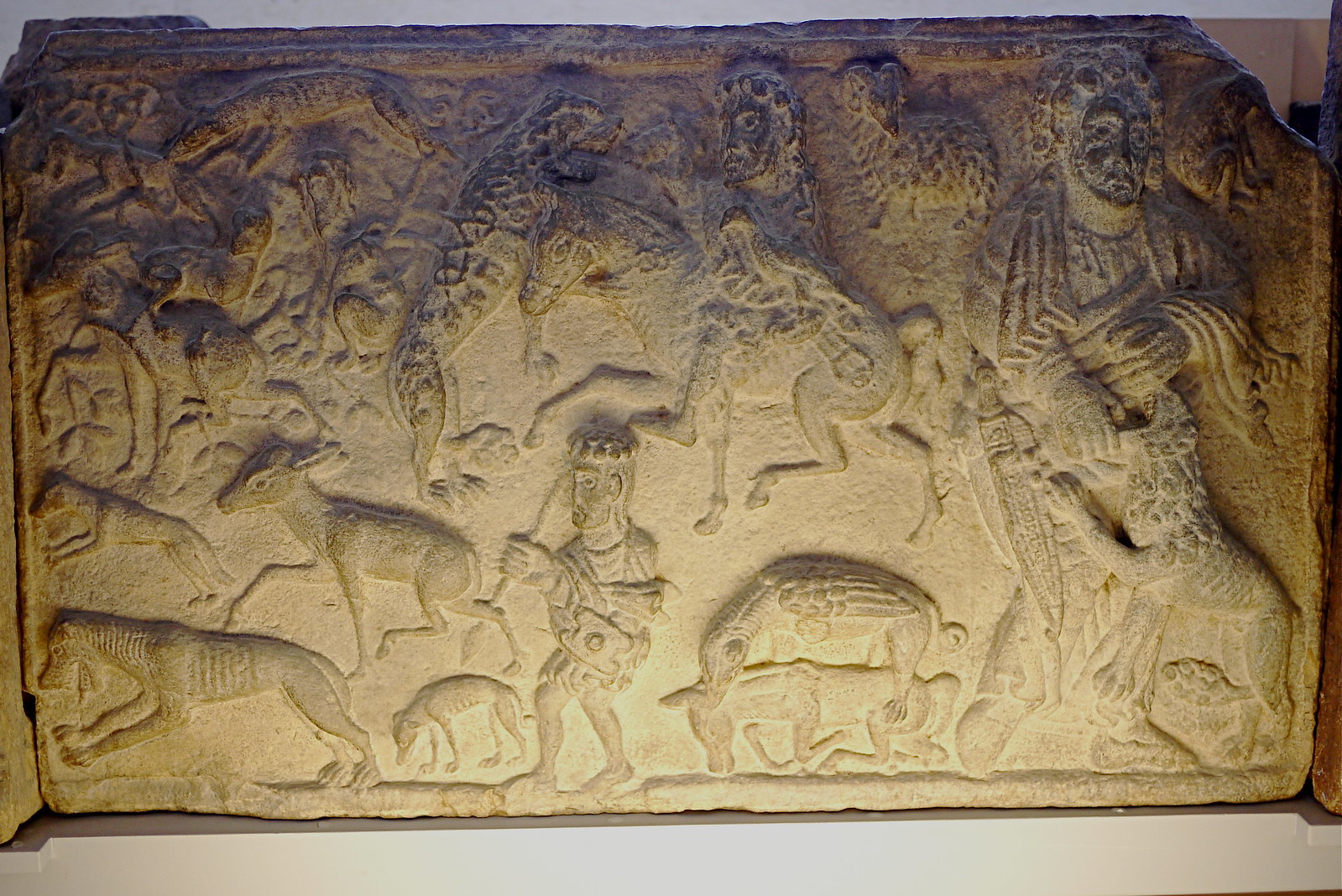
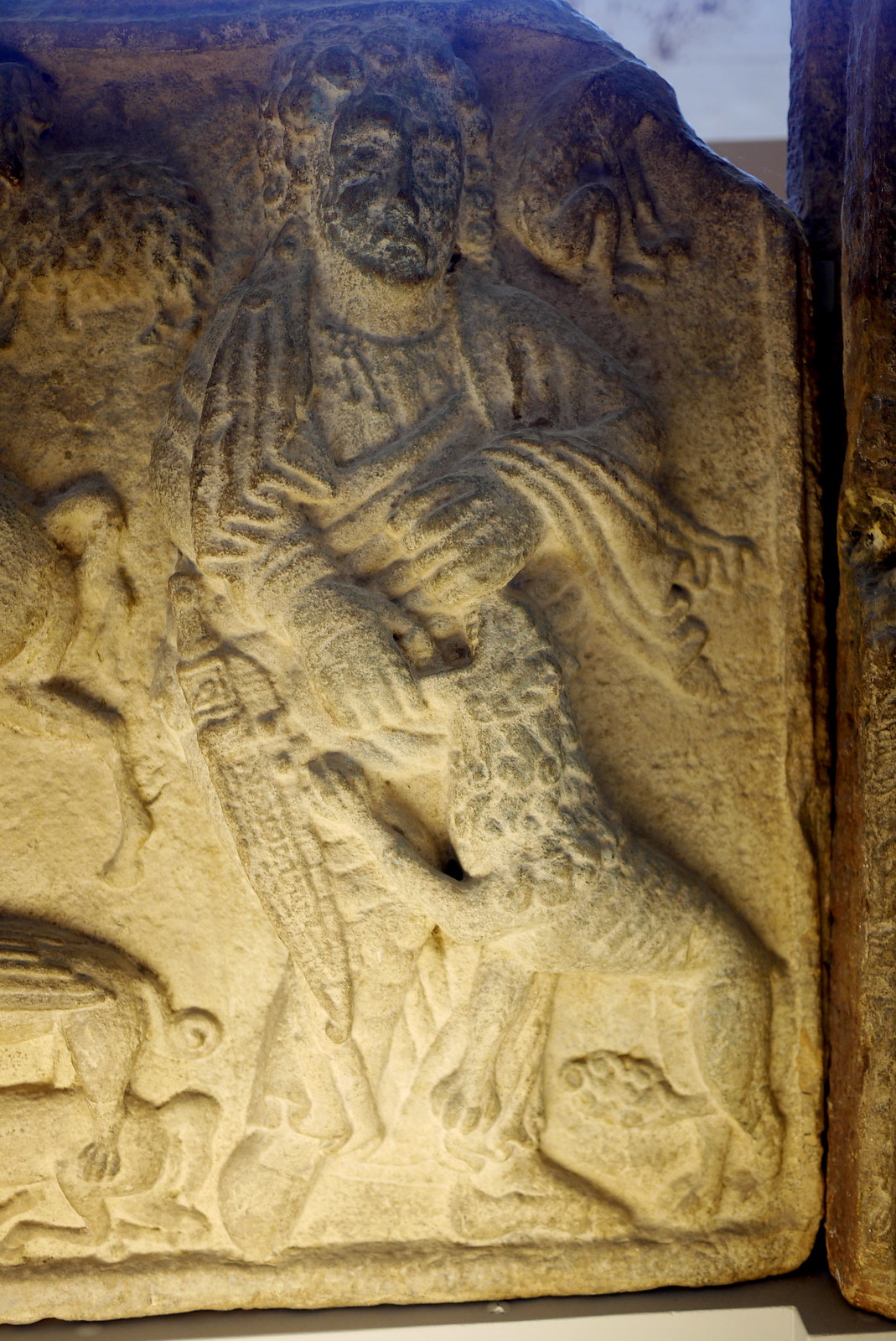
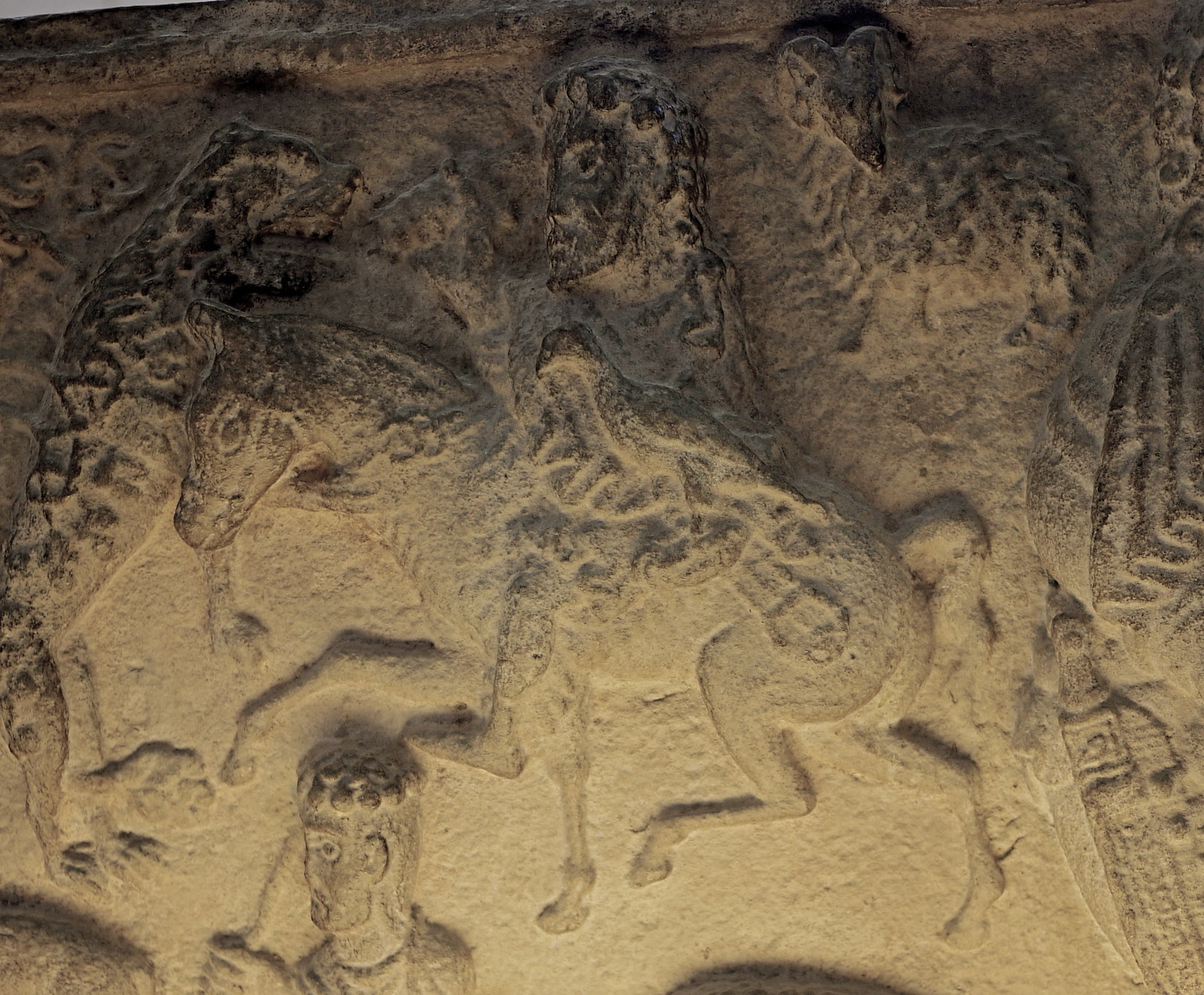
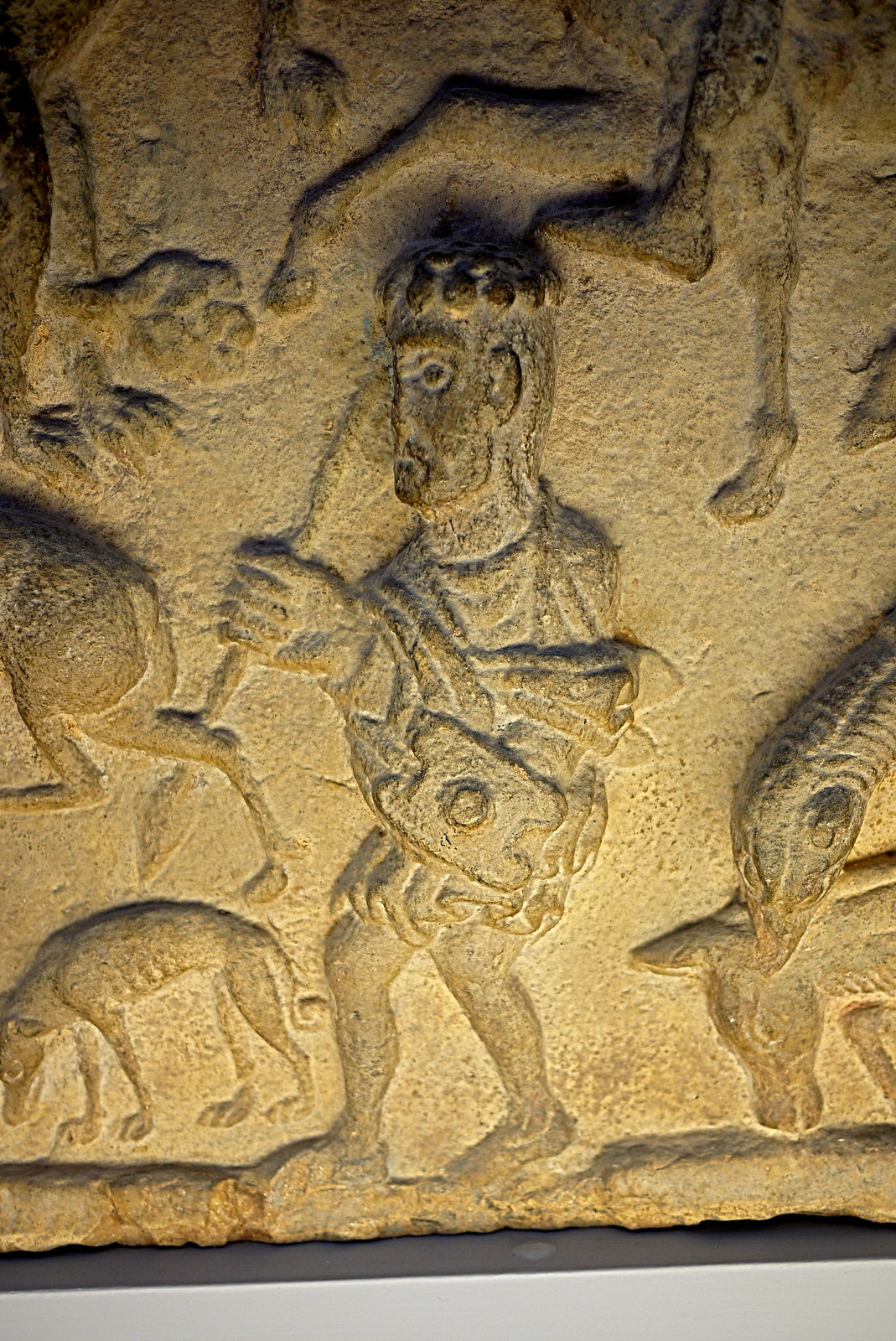
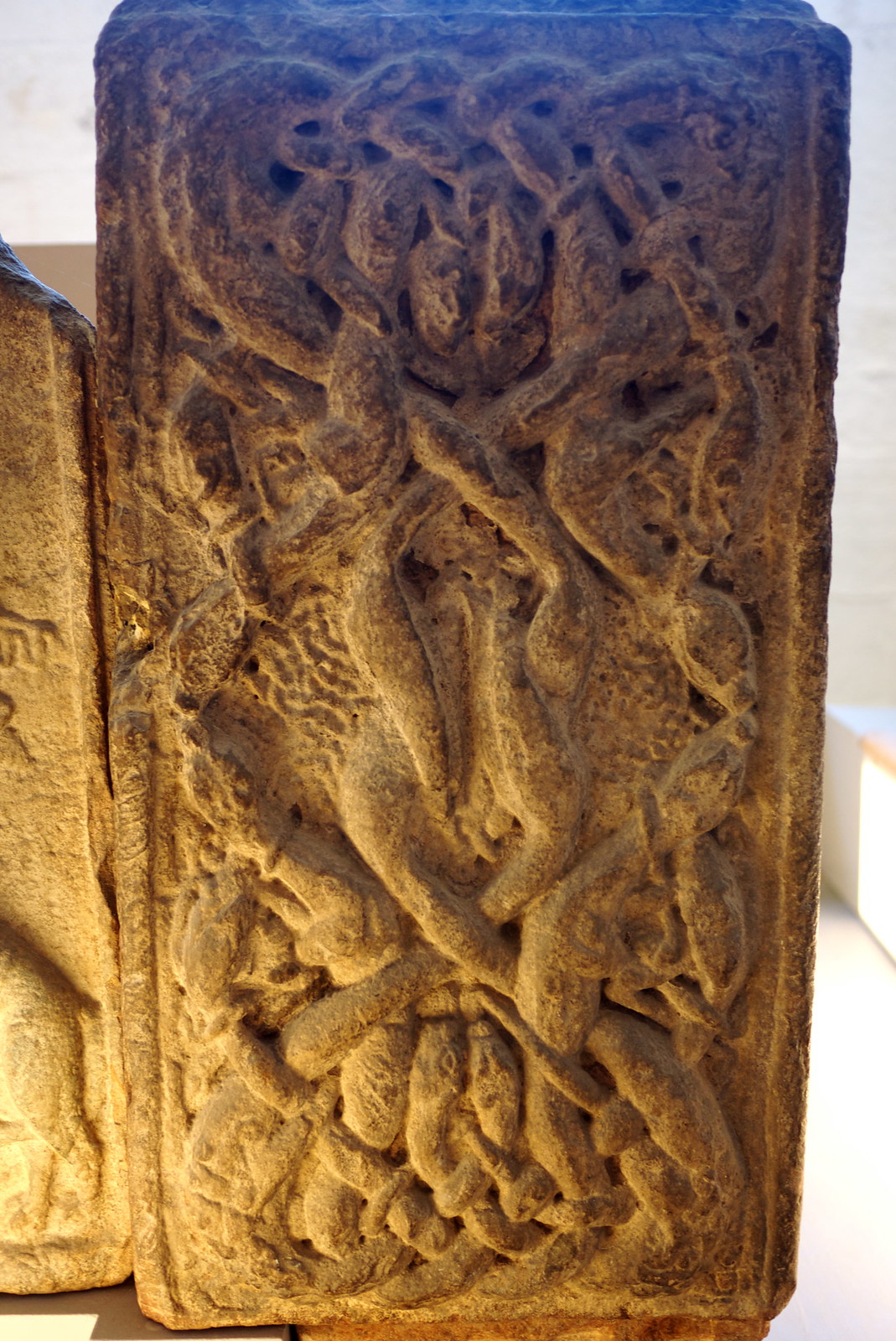

1 comment:
You said 'interpenetration'. Fnar fnar.
The rest was very interesting though!
Post a Comment